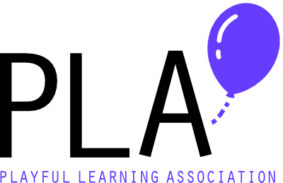Each month we will introduce a PLA member through 5 photos telling their Playful Learning journey. This month, we introduce you to…
Carmen Ionita: Final year PhD student in Cognitive Neuroscience at the University of Manchester, involved in public engagement and science communication projects using interactive learning experiences.
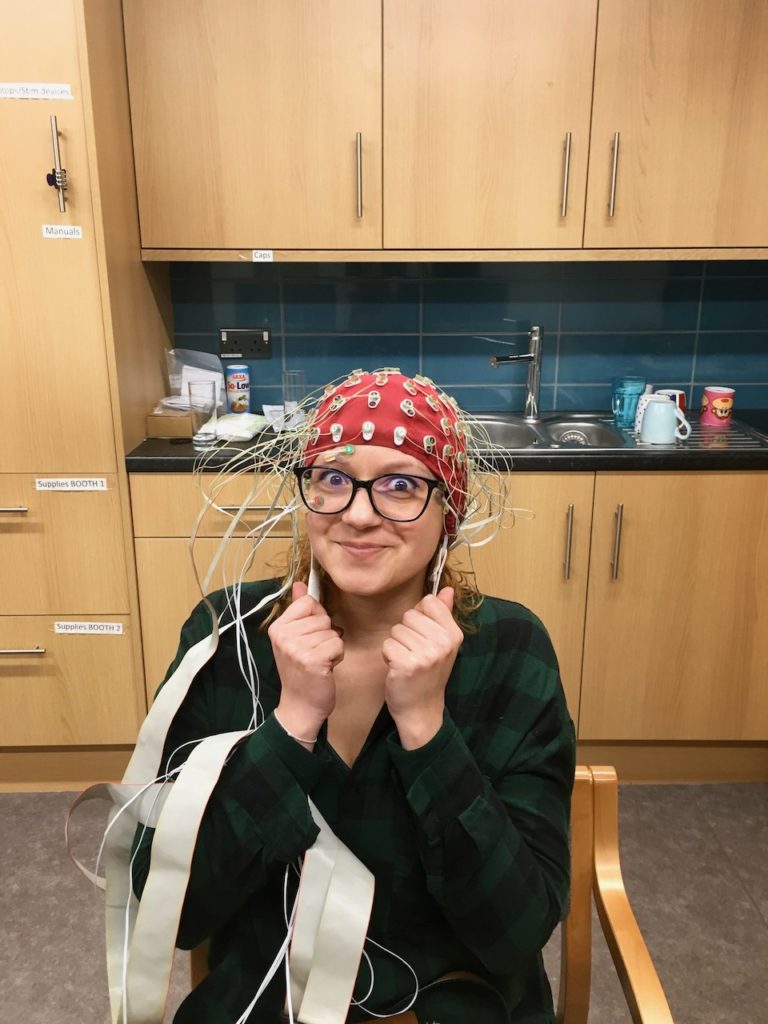
This is me wearing an EEG cap to show how participants in my experiments look like. I like using this picture when I am running science communication events (for young audiences in particular) because it creates a more friendly space by looking less serious in front of them.
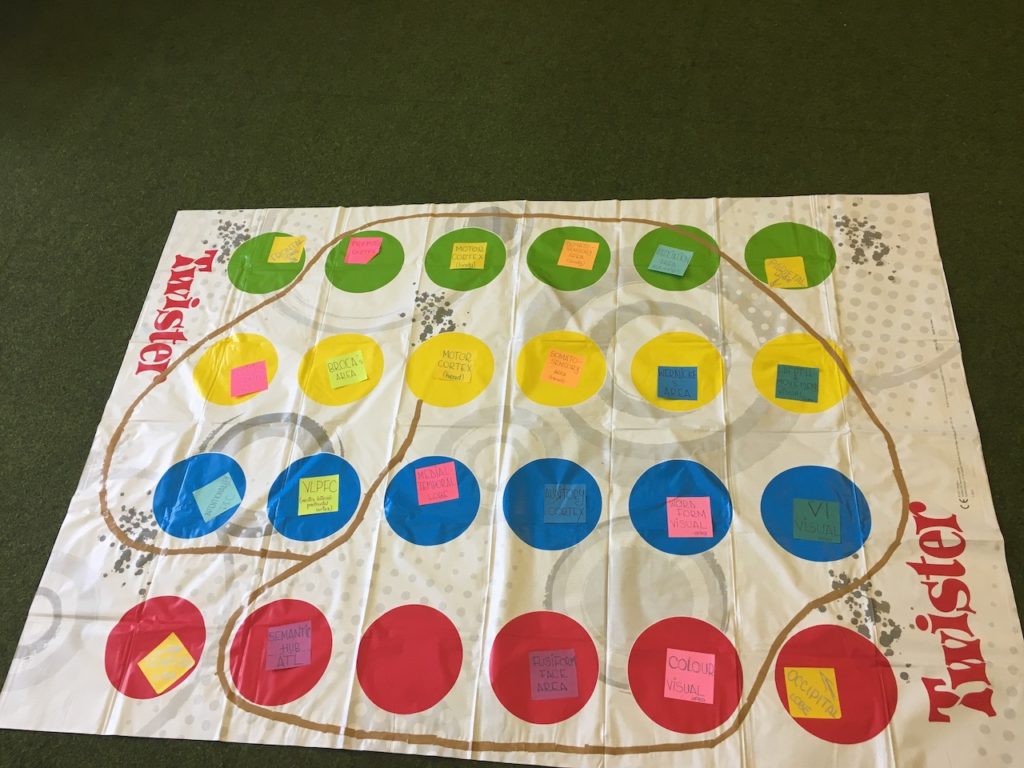
During British Science Week one of the activities I designed aimed to explain what brain connectivity means and how different brain regions communicate when we are performing various tasks. What better way to show this than playing Twister…with a twist.
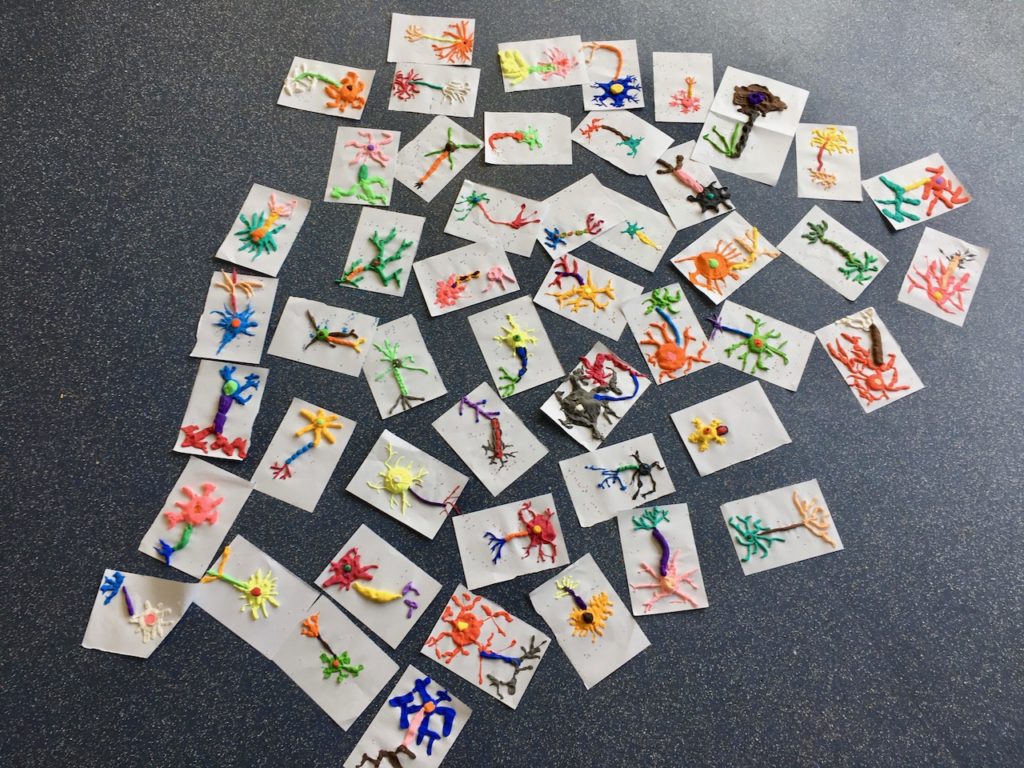
When running events for primary school children I used play-doh to explain the structure of a neuron and then we created a network to show how neurons communicate. Less visible in this picture are the cake sprinkles we used to show different neurotransmitters that carry messages between neurons.

Being passionate about puzzles and escape rooms, I wanted to create an escape box about memory and brain research. But first I had to play many of these boxes myself to get some inspiration – EXIT boxes were the basis for the Big Brain Box. It was such an enjoyable process to play for “work” that it didn’t feel like work at all.
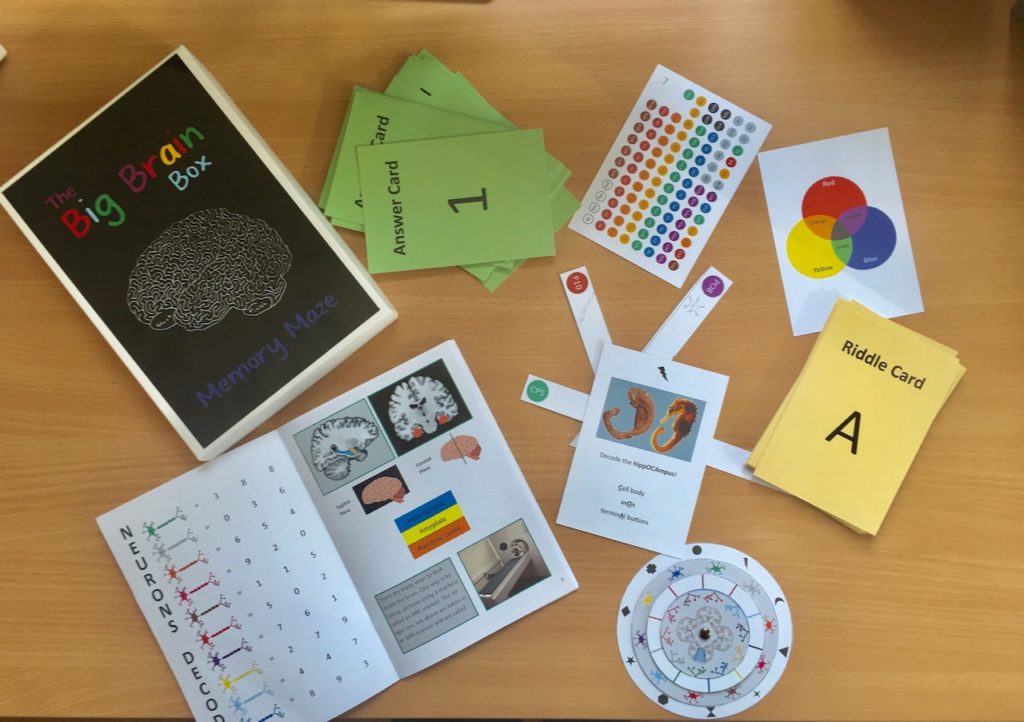
With help from many people, a first version of the Big brain Box has been created. It involves a series of 10 puzzles which, once solved, ‘unlock’ learning messages about the brain and memory. This is a beta version, as my learning from playing the game with more than 200 students and 2 adult groups (experts in game design for HE and youth work) is that it needs to go through several stages before becoming a game. The next stage involves fixing some bugs we identified and integrating the feedback we received so far.
Thanks for sharing your story and your photos Carmen.
If you are unlucky, you might be selected as next month’s sacrifice chosen member – we will be in touch!
